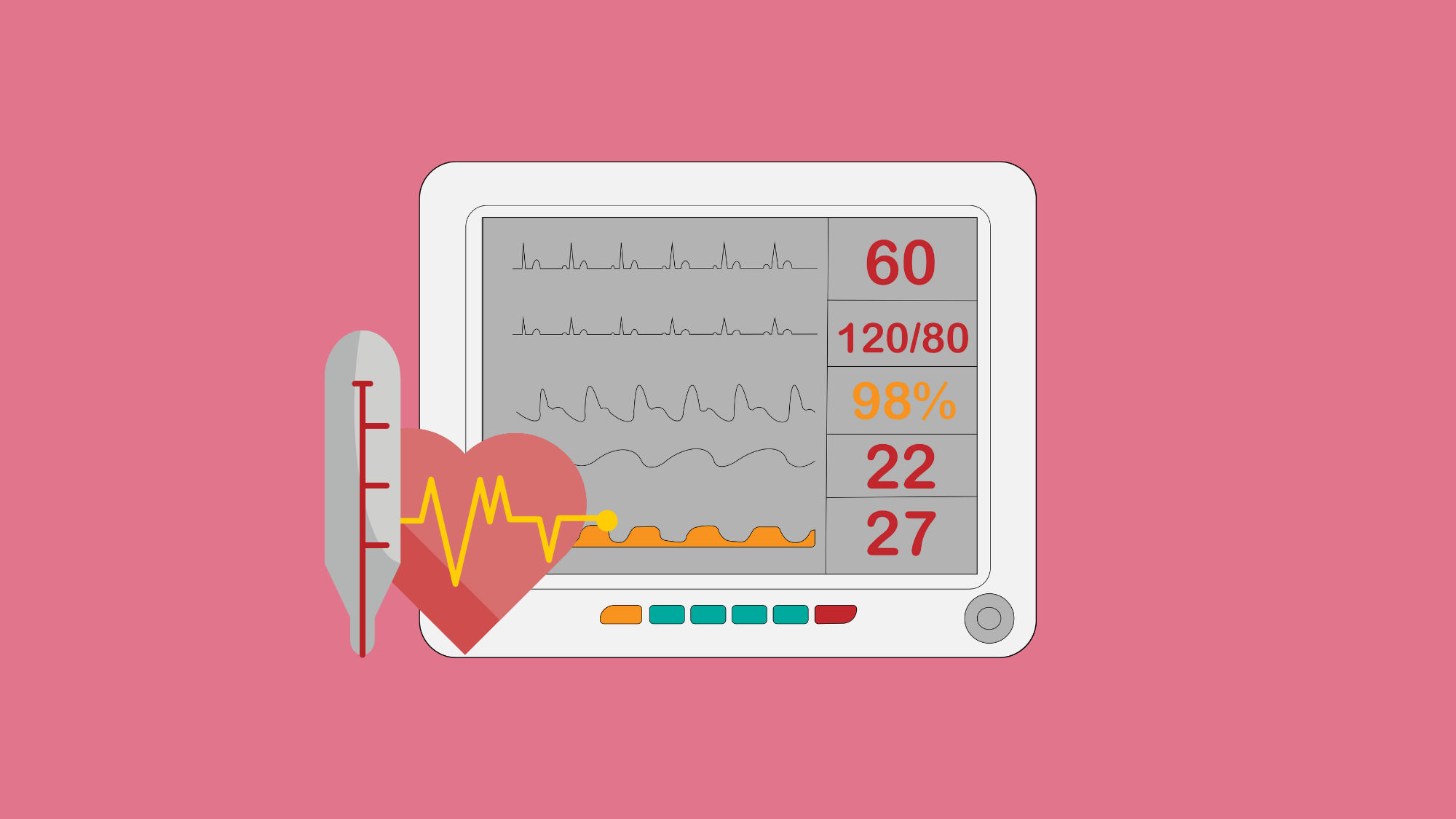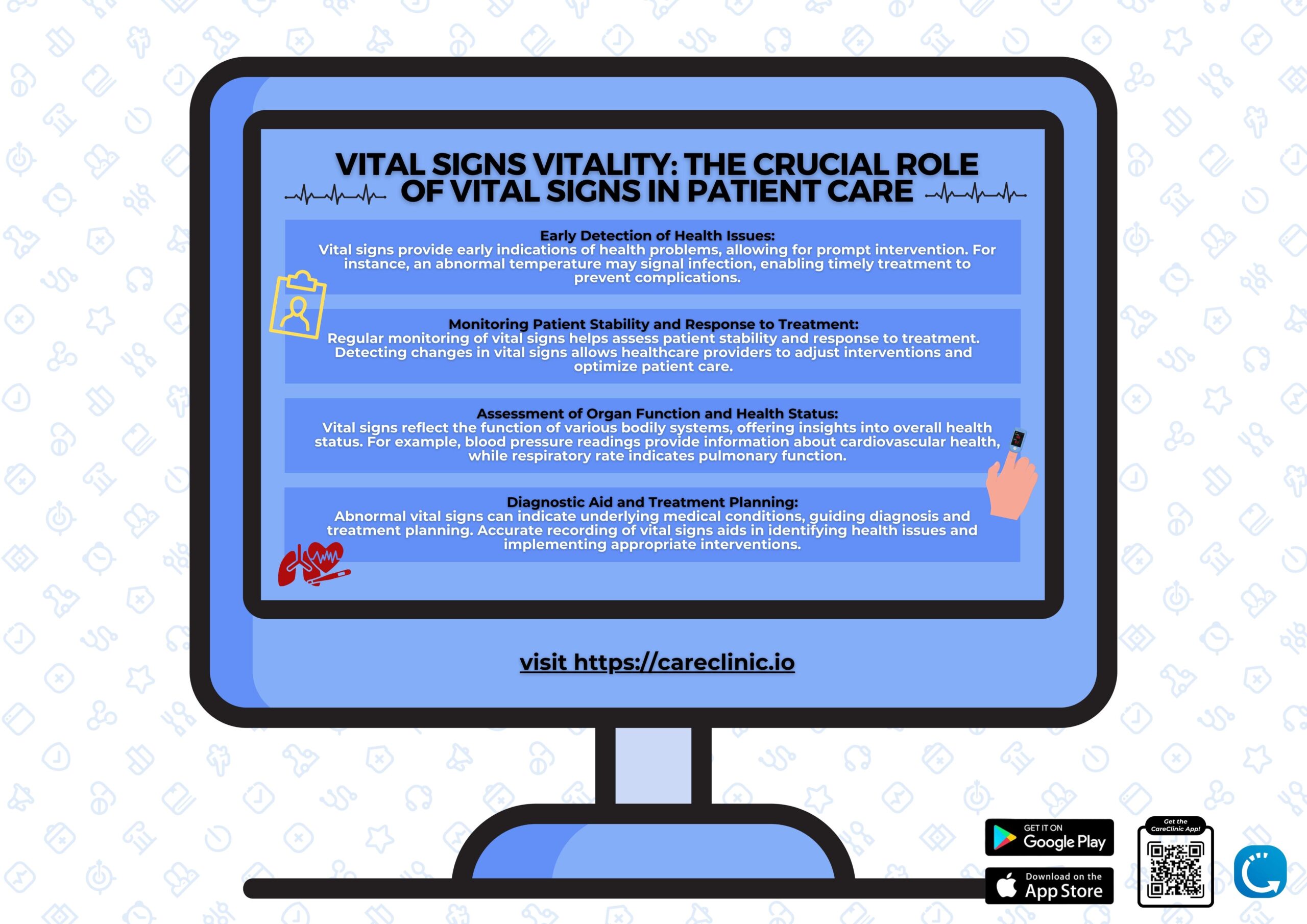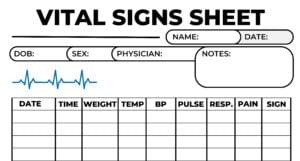
In today’s digital age, medical records have become an essential tool in providing quality healthcare. One crucial aspect of these records is the inclusion of vital signs, which provide valuable insights into a patient’s overall health and well-being. This article aims to shed light on the importance of vital signs in medical records and guide you through the process of downloading a Vital Signs Sheet PDF format. By the end, you’ll have a comprehensive understanding of basic functions on how to utilize this powerful resource effectively.
Understanding the Importance of Vital Signs in Medical Records
Vital signs play a vital role in patient assessment, helping healthcare providers assess a patient’s baseline health and monitor changes over time. These measurements, such as blood pressure, heart rate, temperature, respiratory rate, and oxygen saturation, provide valuable information about a person’s overall health and can be early indicators of underlying medical conditions.
Without accurate and properly recorded vital signs, healthcare professionals may miss crucial signs of deterioration or fail to detect abnormal patterns. By including these measurements in medical records, healthcare providers can effectively track a patient’s health status, identify potential risks, and make informed decisions about their care.
The Role of Vital Signs in Patient Assessment
Vital signs serve as a window into a patient’s well-being, offering valuable clues about their underlying health. By regularly monitoring vital signs, healthcare professionals can monitor a patient’s response to treatment, identify early warning signs of complications, and make timely interventions. For example, a spike in temperature or a sudden drop in blood pressure can indicate a potential infection or hemorrhage, prompting further investigation and appropriate action.

Key Components of a Vital Signs Sheet
A comprehensive Vital Signs Sheet includes various key components to ensure accurate and efficient record-keeping. These may include:
- Date and time of measurement: Recording the date and time of each measurement allows healthcare providers to track changes over time and identify any trends.
- Measurement values: Accurate and precise measurement values, such as blood pressure, heart rate, temperature, respiratory rate, and oxygen saturation, provide quantitative data for analysis.
- Comments and observations: Adding comments and observations, such as the presence of symptoms or any noted abnormalities, helps provide context to the recorded measurements.
- Signature and credentials: Each recorded entry should be signed and dated by the healthcare professional responsible for the measurement, ensuring accountability and establishing a legal record.
Understanding Variations in Vital Signs
It is important to note that vital signs can vary depending on various factors, such as age, gender, and overall health. For example, a normal vital sign for an adult may range from 60 to 100 beats per minute, while a normal heart rate for a newborn can be as high as 160 beats per minute. Understanding these variations and interpreting vital signs in the context of the individual patient is crucial for accurate assessment and diagnosis.
In addition to their role in patient assessment, vital signs also play a significant role in monitoring the progress of treatment plans. By comparing vital signs before and after interventions, healthcare providers can evaluate the effectiveness of treatments and make necessary adjustments to optimize patient outcomes. For example, if a patient’s blood pressure remains high despite medication, healthcare providers may need to consider alternative treatment options or adjust the dosage.
Vital signs are a fundamental aspect of medical records, providing healthcare professionals with essential information about a patient’s health status. By accurately recording and interpreting these measurements, healthcare providers can effectively assess patients, monitor their progress, and make informed decisions about their care. The comprehensive Vital Sign Sheet serves as a valuable tool for organizing and documenting patient’s vital signs, ensuring that no crucial information is overlooked or omitted.
Download Free Printable Vital Signs Sheet PDF
Keeping track of vital signs is essential for monitoring health and ensuring proper care. Our free printable Vital Signs Sheet provides a convenient way to record important measurements such as temperature, pulse, respiration, and blood pressure. Whether you’re a healthcare professional, a caregiver, or simply looking to stay organized, this easy-to-use template will help you efficiently track and manage vital health information. Download your PDF today and take the first step toward better health management!

⤵️ Printable Vital Signs Sheet
Utilizing the Vital Signs Sheet in Medical Practice
Accurate and timely vital sign documentation is essential for patient care in the hectic world of medicine. For healthcare practitioners, the Vital Signs Sheet is an indispensable tool that makes it easy to record and keep track of vital health indicators including blood pressure, respiration, temperature, and pulse.
Practitioners can swiftly evaluate a patient’s status, spot trends, and decide on therapy and action by using this sheet. In order to improve patient outcomes and practice efficiency overall, this article will examine the best practices for integrating the Vital Signs Sheet into your medical workflow.
Recording and Interpreting Vital Signs
Accurate recording of vital signs is crucial to ensure the reliability and usefulness of medical records. When using a Vital Signs Sheet, follow these best practices:
- Use calibrated and properly maintained equipment to obtain accurate measurements.
- Record the measurements promptly and legibly to prevent errors or misinterpretations.
- Compare recorded values to established reference ranges or normal values and flag any deviations or concerning trends.
By adopting these practices, healthcare providers can effectively interpret vital signs, identify patterns, and make informed decisions about patient care.
It is important to note that vital signs are not isolated measurements but rather pieces of a puzzle that, when put together, provide a comprehensive picture of a patient’s health status. For example, an elevated heart rate coupled with a low blood pressure may indicate hypovolemia or shock. Understanding the interplay between different vital signs can help healthcare professionals assess the overall condition of a patient more accurately.
Ensuring Accurate Data Entry of Vital Sign
Accurate data entry is crucial to maintaining the integrity of medical records. When entering vital signs into the Vital Signs Sheet, consider the following:
- Double-check the accuracy of each recorded value before finalizing the entry.
- Avoid abbreviations or acronyms that may cause confusion or misinterpretation.
- Include any relevant comments or observations to provide a comprehensive context for future reference.
By adhering to these practices, healthcare professionals can ensure accurate and reliable data entry, promoting patient safety and quality of care.
Furthermore, it is essential to recognize the significance of trends in vital signs over time. A single measurement may not always provide a complete picture of a patient’s condition, but tracking changes in vital signs can reveal important insights. For instance, a gradual increase in body temperature over several hours may indicate an underlying infection that requires further investigation and intervention.
Maintaining Privacy and Security with Digital Medical Records
The introduction of electronic medical records (EMRs) is causing a substantial revolution in the healthcare sector in today’s increasingly digital society. These digital platforms improve care coordination, accessibility, and efficiency, but they also give rise to serious privacy and security problems. Sensitive patient data is being transmitted and kept online, increasing the danger of data breaches and illegal access.
The purpose of this is to examine the delicate balance that must be struck between protecting patient privacy and utilizing the advantages of digital medical information. We’ll look at data protection laws and regulations, security-enhancing technology and procedures, and the moral ramifications of managing personal health data in the digital era.
By prioritizing privacy and security, we can ensure that the transition to digital records not only improves healthcare delivery but also respects and protects the rights of patients.
Protecting Patient Information
As technology advances, the importance of maintaining patient privacy and security cannot be overstated. When using digital medical records, including the CareClinic app, it’s essential to prioritize the protection of personal health information. Here are a few measures you can take:
- Ensure you have a strong and unique password for your CareClinic account, keeping it confidential and changing it regularly.
- Avoid accessing sensitive medical information on public or unsecured Wi-Fi networks.
- Regularly update your device’s operating system and the CareClinic app to benefit from the latest security enhancements.
By following these steps, you can help safeguard your personal health information and maintain the utmost confidentiality.
Ensuring Organizational Responsibility for Patient Data Protection
However, it’s important to understand that protecting patient information goes beyond individual actions. Healthcare organizations also play a crucial role in ensuring the security and privacy of digital medical records. CareClinic, for instance, employs robust security measures to safeguard patient data. These measures include:
- Implementing encryption protocols to protect data both during transmission and storage.
- Regularly conducting security audits and vulnerability assessments to identify and address any potential weaknesses in the system.
- Training staff members on the importance of data privacy and security, as well as best practices for handling sensitive information.
- Partnering with trusted third-party vendors who adhere to stringent security standards.
By entrusting your medical records to platforms like CareClinic, you can have confidence that your information is being handled with the utmost care and security.
Complying with Health Information Privacy Laws
Healthcare providers using digital medical records, such as the CareClinic app, must comply with specific privacy laws to protect patient confidentiality. CareClinic adheres to the highest standards of data privacy and security, ensuring compliance with legislation, such as the Health Insurance Portability and Accountability Act (HIPAA).
By keeping your health information within trusted platforms like CareClinic, you can have peace of mind knowing that your data is being handled securely and in accordance with legal requirements. Furthermore, CareClinic goes above and beyond legal obligations by implementing additional privacy measures to safeguard patient information. These measures include:
- Regularly conducting internal audits to ensure ongoing compliance with privacy laws and regulations.
- Providing patients with transparent information about how their data is collected, used, and stored.
- Obtaining explicit consent from patients before sharing their information with any third parties.
- Implementing strict access controls to limit data access to authorized personnel only.
By choosing a healthcare provider that prioritizes privacy and complies with relevant laws and regulations, you can have confidence in the security of your digital medical records.
The Future of Digital Medical Records
As we stand on the brink of a new era in healthcare, digital medical records (DMRs) are set to transform the way patient information is gathered, stored, and utilized. With the advent of technologies like blockchain, cloud computing, and artificial intelligence, DMRs have much more potential than just record-keeping.
They offer better patient interaction, more interoperability, and data-driven insights that can result in more individualized care. But there are other obstacles facing DMRs in the future, such as data security, legal compliance, and the requirement for fair access for a variety of demographic groups.
This exploration will focus on the new directions that are influencing digital medical records, the advantages that they present to both patients and providers, and the crucial issues that need to be resolved in order to fully utilize them. We can move forward in a way that improves healthcare delivery while putting the needs of the patient first by comprehending these dynamics.
Technological Advancements in Medical Record Keeping
The advent of digitalization has revolutionized the healthcare industry, offering tremendous benefits in terms of efficiency, accessibility, and patient outcomes. Innovations, including the CareClinic app, have paved the way for the future of digital medical records. With features such as real-time data synchronization, interactive interfaces, and intelligent data analysis, it’s becoming easier than ever for patients and healthcare providers to collaborate and make informed decisions.
The Impact of Digitalization on Healthcare Efficiency
Digital medical records, such as those facilitated by the CareClinic app, streamline record-keeping processes, reducing paperwork, and eliminating the risk of lost or misplaced documents. With user-friendly interfaces and intuitive features, patients can actively engage in self-care by monitoring their vital signs, tracking symptoms, and sharing this information with healthcare professionals.
This increased engagement empowers individuals to take charge of their health and enables healthcare providers to deliver personalized care based on accurate, up-to-date information. The inclusion of vital signs in medical records is crucial for effective patient assessment and care.
By downloading a Vital Signs Sheet in PDF format, such as the one provided by CareClinic, you can ensure accurate and reliable documentation of these measurements. Utilizing this powerful resource, along with the secure and user-friendly features of CareClinic, empowers patients to actively engage in self-care and enables healthcare providers to deliver quality, personalized care.
Embrace the digital era and take advantage of the convenience and efficiency that digital medical records bring.
Use the CareClinic App to Digitally Track Patient’s Vital Signs
Take control of your health with the CareClinic App, your comprehensive solution for managing vital signs and overall well-being. By tracking your or patient’s blood pressure, heart rate, temperature, and more, the app provides a clear picture of your health trends over time.
The intuitive interface makes it simple to enter and review data in medical setting, while the app’s analysis tools help you understand the implications of your vital signs. With CareClinic, you’re not just collecting data; you’re gaining insights that can lead to better health outcomes.
Download the CareClinic App and Get a Virtual Vital Sign Sheet Insights
Don’t wait to prioritize your health—install the CareClinic App today and start benefiting from the seamless integration of your medical records and vital signs tracking. The app’s reminders ensure you never miss a measurement of vitals, and secure cloud storage means your information is always at your fingertips. Experience the peace of mind that comes from having a reliable health management tool in the palm of your hand. Let CareClinic be your partner in achieving and maintaining optimal health.


